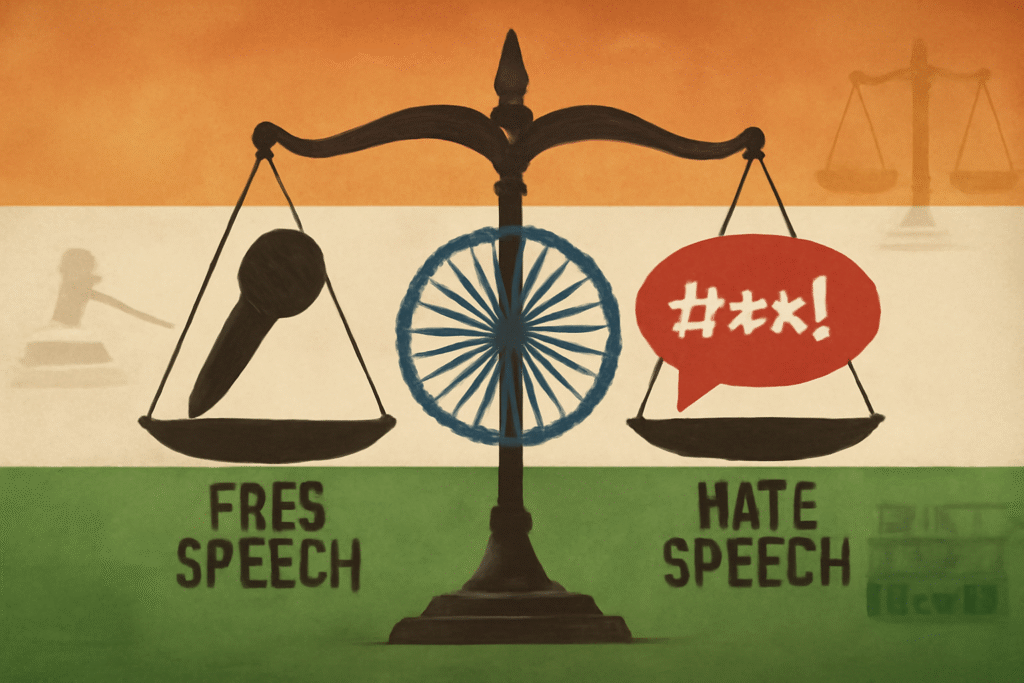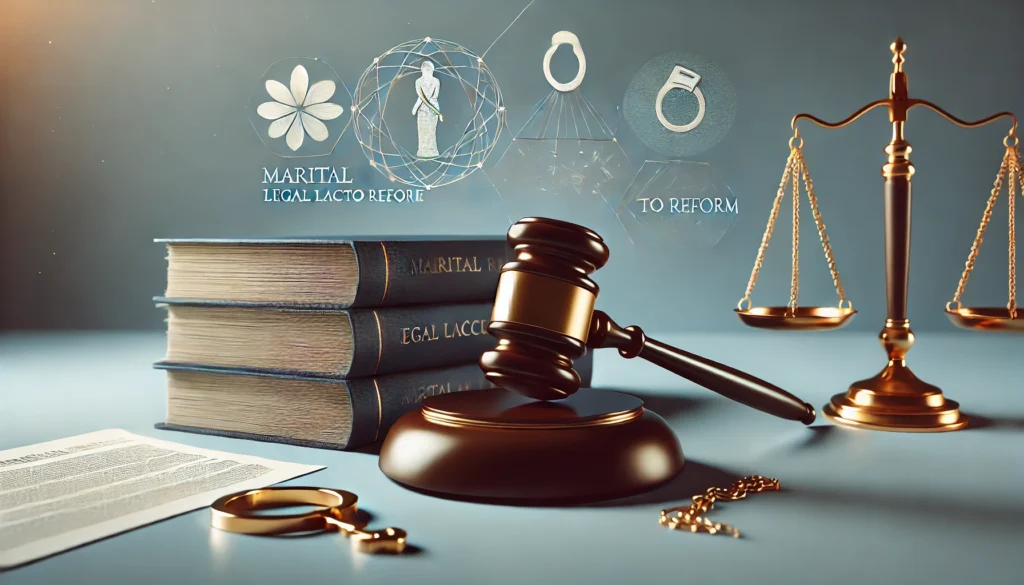Published on 12th February 2025
Authored By: Rama Prasad Zaware
MM’s Shankarrao Chavan Law College, Pune
Introduction
The case Sukanya Shanta Vs. Union of India is a classic example of guidelines that were developed in light of the major problem of caste discrimination in Indian prisons. The judgement delivered by a Constitution bench of Chief Justice Dr. Dhananjaya Y. Chandrachud, Justice Jamshed B. Pardiwala, Justice Manoj Mishra intends to uphold affirmative action on the principles of trust in equality and dignity enshrined in the Indian Constitution. Most important, the case offers a window into the legal analysis of the role of inmate social justice in the punitive sphere. (Sukanya Shantha Vs. Union of India, 2024)
Citation: W.P.(C) No. 1404/2023
Judgement by: Chief Justice Dr. Dhananjaya Y. Chandrachud, Justice Jamshed B. Pardiwala, Justice Manoj Mishra
Date of Judgement: 03/10/2024
Facts of the Case
The petitioner Sukanya Shanta is a resident of Hyderabad, a professional journalist and researcher who came forward with a PIL case on the deplorable condition of caste discriminative Practices in Indian Prisons. The petitioner also submitted field reports and RTI replies and that discrimination was meted out to prisoners belonging to the deprived castes as regards distribution of work load, food, medical treatment and punishments. The petitioner also penned an article titled: “From Segregation to Labour, Manu’s Caste Law Governs the Indian Prison System” that was published on Dec 10, 2020. The article emphasized perpetration of caste bias in prisoners’ treatment. The Petitioner further came to the Supreme Court under Article 32 of the Constitution seeking quashing of Article and various provisions in State Prison Manuals.
Some of the Prison Manual provisions challenged stated that: :(i) A convict sentenced to simple imprisonment shall not be made to do lowly or degrading chores unless he was already in the class that does such before; (ii) A convict Overseer may be posted as a night watchman if he does not belong to those classes which have it innate disposition to escape, if it belongs to wandering tribes; (iii) Food will be cooked and taken to the cells by prisoner cooks of proper caste; (iv) Sweepers should be chosen from the Mether or Hari caste, also from the Chandal or other castes, if by the custom of the district they perform similar work when free; and (v) Any person in a jail who is of such a high caste that he cannot eat the food cooked by the existing sweepers must be made cook with full Establishment allowance for the total number of men.
The Petitioner also stated that the caste bias was still operational in the prisons of the States of Jharkhand; Uttar Predesh; West Bengal; Maharashtra; Orissa; Karnataka; Andhra Pradesh & Tamil Nadu at the Supreme Court. The case was initiated when the Indian prison system did not conform to constitutional provisions on equality (Article 14), non-discrimination (Article 15) and right to life with dignity (Article 21). (The Government of India, 1950)
The Union of India (Respondent) was being represented by Ministry of Home Affairs and National Human Rights Commission.
Issues
- Whether the reported instances of caste based discrimination in prison infringe the provisions of Part III of the Constitution includes the Article 14, Article 15 and Article 21.
- Whether the State has breached its duties by not meeting some of the legal requirements of the Prisons Act, 1894 and other pertinent laws?
- Which precautions can guarantee equal treatment of prisoners disregarded of caste status?
Relevant Laws
- Constitution of India:
Article 14: Equality before the law.
Article 15: Prohibition of discrimination based on caste.
Article 21: Right to life and personal liberty, including the right to dignity.
- Prisons Act, 1894
- Scheduled Castes and Scheduled Tribes (Prevention of Atrocities) Act, 1989
- United Nations Standard Minimum Rules for the Treatment of Prisoners (Nelson Mandela Rules)
Arguments
Petitioner:
The petitioner argued that there was discrimination in job allocation. Dalit prisoners were disproportionately assigned menial tasks such as cleaning. It was argued that there was disparity in food and healthcare services. The evidence of bias in quality and quantity provided to marginalised prisoners was provided. It was argued that there was segregation and verbal abuse towards the marginalised prisoners and testimonies revealing casteist slurs uttered by the prison authorities. State failed to perform it’s responsibility to enforce anti- discrimination provisions in prisons. There is absence of mechanisms for grievance redressal specific to caste discrimination.
The petitioner demanded for structural reforms such as mandatory anti-discrimination training for prison staff, establishment of independent supervisory bodies, data collection and periodic reporting on caste dynamics in prisons. (The Prisons Act, 1894)
Respondent:
The respondent, the Union of India argued that prison administration adhered to rules ensuring equality among prisoners. They claimed that isolated incidents of misconduct did not establish systematic discrimination. The respondents highlighted the existing mechanisms such as the availability of grievance redressal systems and emphasized periodic inspections conducted by the NHRC and state human rights commissions. They argued the challenges in implementation, cited resource constraints and logistical issues in ensuring uniform treatment across all prisons.
Ratio Decidendi
The rationale given by the court was completely based on constitutional provisions under Article 14, 15 & Article 21 of the Indian Constitution. The above provisions in conjunction provide for strong foundations of equity, rights of equal reproduction, non- discrimination and safeguarding the right to life and personal liberty. The bench also made it clear that how caste discrimination policy itself violates the constitution and the principles of justice. Article 14 of the Constitution provides for equality before law, Article 15 clearly prohibits discrimination on the ground of caste and Article 21 for right to life and dignity. On this, the court held that these constitutional guarantees cast a clear duty on the state to ceaselessly wage war against caste prejudices operating in diverse spheres of social life, including places of formal incarceration, which ought to reflect principles of justice and fairness. In its reasoning, the court appeared to embrace the task of turning these constitutional tropes into practical redress for chronic social injustices. (The Scheduled Castes and Scheduled Tribes (Prevention of Atrocities) Act, 1989)
Apart from the constitutional provisions, the court called empirical and international factors as part of the supportive argumentation. It supported the petitioner’s figures that it confirmed that caste discrimination, in this case, in prison is systemic rather than a one-off incident. In support of this position, the court quoted on the Nelson Mandela Rules, an international instrument asserting the concepts of dignity, humanity, and anti-discrimination in prisoners’ handling. The bench also criticized the state for not having proper legislation for accountability saying that this has led to discrimination continues unabated. Failure of the state on these aspects joined the court to ensure that domestic practices complied with both constitutional provisions and International Human Rights in preparation for equitable changes within the criminal justice system. (The United Nations Standard Minimum Rules for the Treatment of Prisoners (the Nelson Mandela Rules), 2015)
Judgement
A Three Judge Bench of the Supreme Court held that the challenged Prison Manual provisions were unconstitutional and violated the following articles of the Constitution: Article 14: Equality Article 15: Prohibition of discrimination article 17: Abolition of untouchability Article 21: Protection of life and personal liberty Article 23: Prohibition of forced labour. The Court asked the States to review prison manuals to the effect within a period of three months. It also asked for a status report from the states There is no record of any reaction form the states at the time of writing this paper. The judgment of the Court was written by the Chief Justice Chandrachud.
The Supreme Court took note of discrimination within prisons based on caste, gender, disability etc and posted the matter after three months to see its compliance of this order. The Court also directed the District Legal Services Authority of the states and the Board of Visitors formed under ‘The Model Prison Manual 2016’ must carry out periodic inspection of the jails so as to note whether or not the caste apartheid or similar discrimination as pointed out in this judgment, was still being practiced by the States and submitted a report to the ultimate court.
The findings of the study are important because the court provided comprehensive guidelines to the Union of India regarding ending caste related discrimination in the prisons. Acknowledging the fact that there was a cultural shift needed, the judgment provided for appreciation of sensitivity training programs for members of the prison staff with a view of making them recognize the changed colours of the world. Also, based on the complaints related to castes, the court ordered the development of separate complaint handling mechanisms on the issue. In order to maintain progress and accountability, the National Human Rights Commission was given the responsibility of reporting on the implementation of the Act. (National Human Rights Commission of India , n.d.)
Analysis
It produced a progressive verdict that proves judiciary’s function as a watchdog of structural injustice and Constitutional law’s capacity to deploy constitutional rights for social transformation. This decision is an extraordinary achievement in campaign for the minorities, especially prisoners, through recognition of the fundamental principle of the humane treatment and the density of human beings. Additionally, the judgment is appreciable as it provides a global perspective on human rights in India as it has based itself on the Nelson Mandela Rules to conduct the reformative function of the prison and the justice delivery system.
In addition, implementation is perhaps the most striking feature of the judgment: to turn principles into actionable reforms, the judgment demands action. In establishing the Broken Institution it creates a foundation for the achievement of systematic modifications to the current methods of prison management, enhanced living condition of prisoners and a major shift of focus from punishment to reform. It undertakes proactive measures in anticipation of favourable future outcomes of the intended reforms as towards the herald of the equitable justice delivery system. The acknowledgment of such lacks by the court also opens further discussion and activism for prison reform, thereby establishing the need for a proper blend between order and fairness in the treatment of inmates.
References
- Sukanya Shantha Vs. Union of India (sci.gov.ins October 3, 2024).
- The Constitution of India (1950).
- Ministry of Law and Justice, Government of India. The Prisons Act, 1984 (1984).
- Ministry of Social Justice and Empowerment. The Scheduled Castes and Scheduled Tribes (Prevention of Atrocities) Act, 1989 (1989).
- Justice Section, Division of Operations, The United Nations Standard Minimum Rules for the Treatment of Prisoners (the Nelson Mandela Rules).
- National Human Rights Commission of India. Wikipedia. (2024a, December 26). https://en.wikipedia.org/wiki/National_Human_Rights_Commission_of_India
- National Human Rights Commission (NHRC) reports on prison conditions.
- Right to information act, 2005. Wikipedia. (2024a, December 13). https://en.wikipedia.org/wiki/Right_to_Information_Act,_2005




